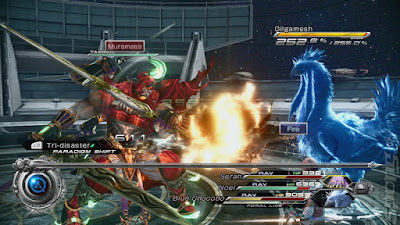In the last post of this series on learning CUDA through building a gravity simulation, we didn't actually do any CUDA. We focused on defining gravity and figuring out how we were going to actually simulate it with practical equations. Now it's time to put those equations to work and see if we can come up with a functioning simulation that uses CUDA. We'll start with the simple 2-body problem of the Earth orbiting around the Sun, and see if we can keep the Earth in orbit.
Musings on software development, technology, and their interconnections with a programmer's everyday life
Search This Blog
Playing With Gravity to Learn CUDA: A Fundamental Force
We started out this series on learning CUDA by diving in and writing a couple CUDA programs that we then got up and running on an nVidia graphics card. That was a great start that gave us an immediate feeling of accomplishment, but to keep advancing toward our goal of building a multi-body gravity simulation, we're going to have to take a break from CUDA and make sure we understand gravity a bit more. Gravity can be modeled at different levels of complexity, so we'll want to decide at what level we want to model it. We'll certainly start simple, but it's still good to know enough about gravity to know where we could go if we wanted and where it's not worth it to explore.
Playing With Gravity to Learn CUDA: Hello, World
I have been interested in CUDA for a long time, and while I've read a few books on CUDA, I have not actually gotten my hands dirty with it, yet. It's time to remedy that situation with this new blog series where I explore CUDA programming with a purpose. The end goal is to create a CUDA program that runs a scalable, multi-body gravity simulation on my GPU. Maybe I'll even draw what's being simulated on the screen. I'm not sure at this point how big I'll be able to make this simulation, but I think it'll be a good way to dive into CUDA and see what it's all about. The real goal here is to experiment, fail, struggle, and learn while having some fun doing it.
Exploring Monster Taming Mechanics in Final Fantasy XIII-2: Dogfooding
This is it―the last post of this series on exploring the monster taming mechanics of Final Fantasy XIII-2 is finally here, and in it we're actually going to do what the title says. Now that we've integrated all of the tables of data that we extracted from the FFXIII-2 FAQs into a functional website, we're ready to use that website to explore how to optimize the monster taming as we play through the game. This exercise is known in the tech industry as dogfooding, where we proceed to eat our own dog food, so to speak, to see whether or not the product we're building is any good. During the course of using the website, we may find opportunities for improvement, missing features, and other things that could just be done better. It's an excellent way to iterate on a product to improve it.
Exploring Monster Taming Mechanics in Final Fantasy XIII-2: Monster Characteristics
Exploring Monster Taming Mechanics in Final Fantasy XIII-2: Finding Monster Materials
We've started asking deeper questions of the monster taming data in this Exploring Monster Taming Mechanics series, but so far we've ignored the fact that these monsters can level up once we've tamed them. Their starting stats and abilities will not stay the same while the monsters develop, so we should take that into account when we're trying to find the strongest monsters. Monsters that can level up to higher levels are going to end up stronger than other monsters that may start out stronger but can't level up as much. And the way these monsters level up is by applying certain materials dropped by defeating other monsters in battle. We need to know when and where we can get those materials, so that is the subject of this post.
Exploring Monster Taming Mechanics in Final Fantasy XIII-2: Asking Deeper Questions
Exploring Monster Taming Mechanics in Final Fantasy XIII-2: Filtering Monsters
Exploring Monster Taming Mechanics in Final Fantasy XIII-2: Viewing More Monster Data and Abilities
Exploring Monster Taming Mechanics in Final Fantasy XIII-2: Viewing the Monster Data
Exploring Monster Taming Mechanics in Final Fantasy XIII-2: Viewing More Data
Exploring Monster Taming Mechanics in Final Fantasy XIII-2: Viewing Data
Exploring Monster Taming Mechanics in Final Fantasy XIII-2: The Remaining Tables
Exploring Monster Taming Mechanics in Final Fantasy XIII-2: Relational Data
Exploring Monster Taming Mechanics in Final Fantasy XIII-2: Data Validation and Database Import
Exploring Monster Taming Mechanics in Final Fantasy XIII-2: Data Collection
Exploring Monster Taming Mechanics in Final Fantasy XIII-2
That debate, however, is not why we're here now. We're here to look at one of the great aspects of FFXIII-2: the monster taming and infusion system.
















